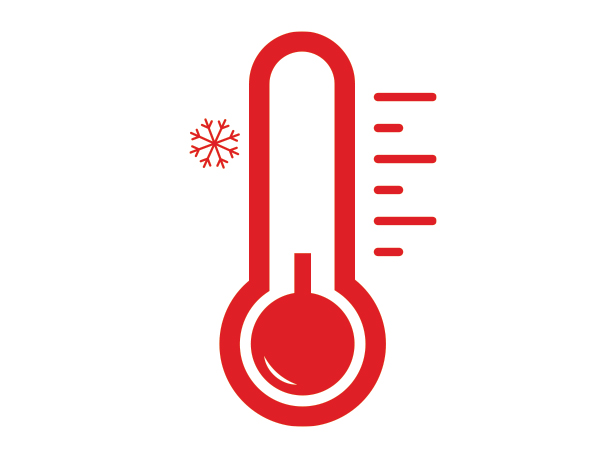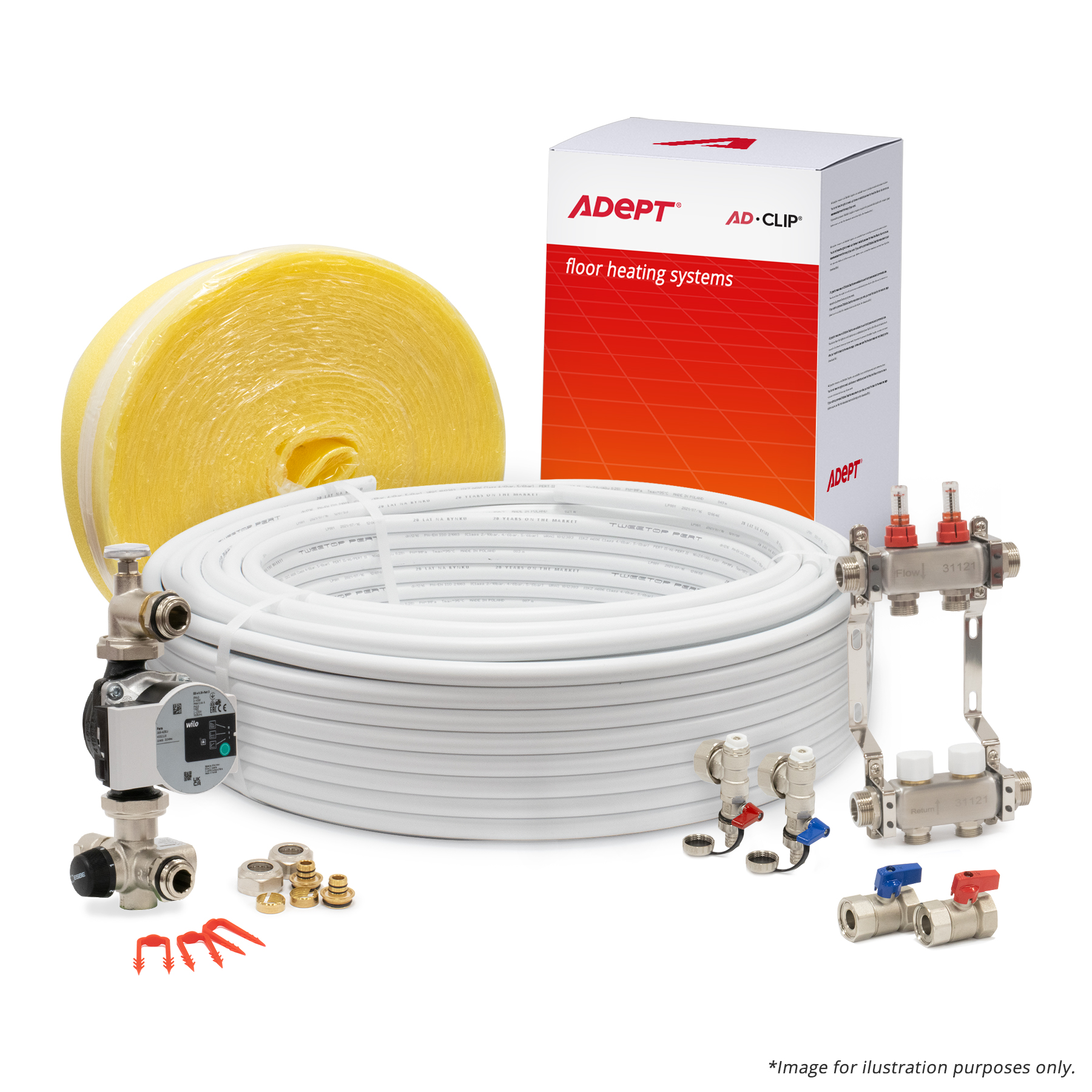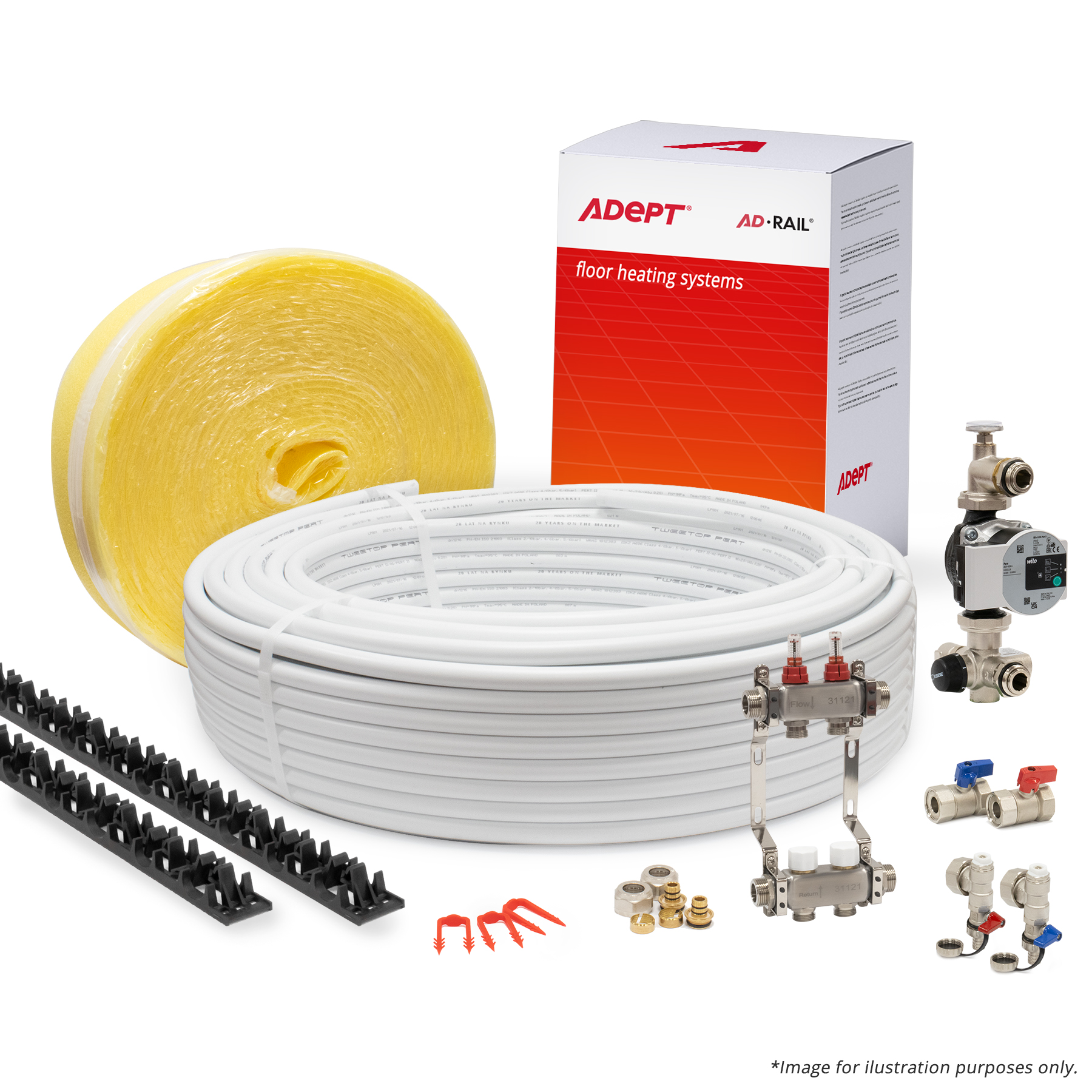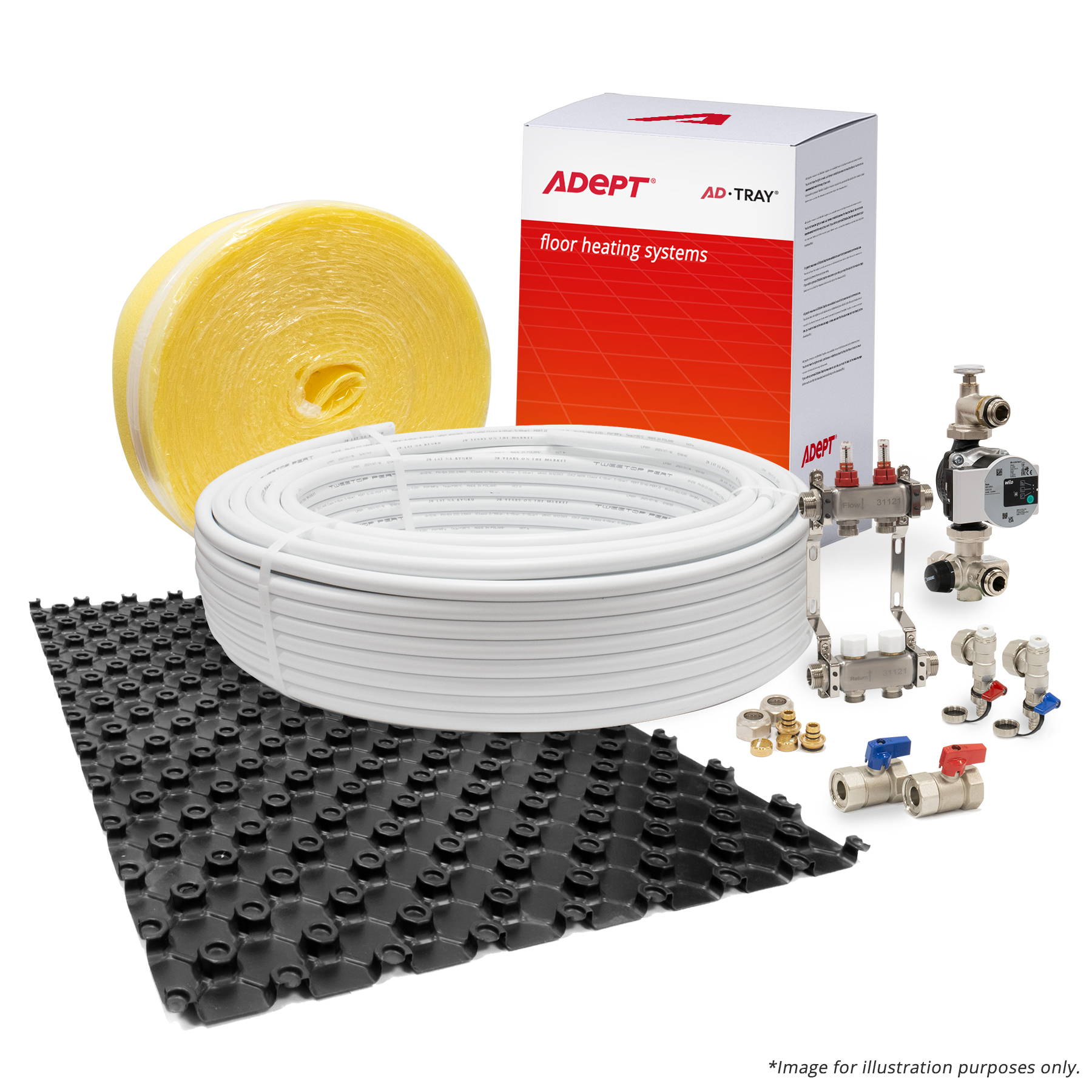Uheat specialises in supplying warm water underfloor heating systems and solutions for new build properties and renovations. With over 20 years experience and a UK based team, we are here to help. If you need any help or a free quote get in touch with us today.
Underfloor heating is an affordable and energy-efficient alternative to traditional radiator based central heating systems. Underfloor heating offers unrivalled comfort and luxury while simultaneously reducing heating bills and having less impact on the environment.
Underfloor Heating is:
Suitable for Most Properties and Room Types: Whether that is a new build, renovation or whether you are upgrading your conservatory, we have solutions available for all situations.
Unrivalled Luxury and Comfort: By spreading the heat around your room evenly, underfloor heating is by far the most comfortable and luxurious form of heating. There are no cold spots, the heat is even and best of all it keeps the floor warm which feels fantastic underfoot.
Maximises Space in the Home or Office: Because there are no exposed pipes or radiators, this means you can utilise all of the space in the room and this also means that there are no radiators to bump into or scold yourself on.
Lower Energy Bills A big issue that has faced many of us over the years is the high energy prices, putting a strain on everyday living. Underfloor Heating uses less energy and can run at lower water temperatures than radiator systems.


Essentially, underfloor heating works by turning your floor into a giant heat emitter by heating pipes or cables installed beneath the floor. Strong flexible underfloor heating pipe is used for warm water underfloor heating systems, whilst cables are used in electric underfloor heating systems.
The heat gets transferred into the floor substrate and then radiates heat into the room above while running at much lower temperatures than a traditional radiator system.

Warm water underfloor heating uses far lower water temperatures than radiator systems while covering a larger surface area. This means that the room is heated far more effectively while using less energy in the process.

Unlike radiators, underfloor heating utilises the entire floor area to heat your room which in turn eliminates any cold spots in the room. The fact that the pipe is hidden beneath the floor also eliminates the need for radiators, freeing up valuable wall space.

One of the key benefits of underfloor heating systems is how amazing they feel underfoot. Heat gently emits upwards from the floor to create a pleasant even heat while making cold floors a thing of the past.

Underfloor heating is a lot more flexible than many people think. From new builds to renovations and extensions, there is an underfloor heating solution to suit all requirements. Whether it is a single room, multiple rooms or even upstairs!
The way the heat is distributed impacts the efficiency and comfort of the heating system. Radiant heat heats objects directly and it maintains the natural humidity in a room, whereas convection of warm air tends to reduce humidity, which can make the heated area feel stuffy. If the whole floor of the room is heated then radiant heat gives a very even spread of heat, whereas conventional heating heats one area initially and then takes time to circulate to reach the required comfort levels.
Rising air temperature through conventional heating can cause discomfort and overheating, which in turn can reduce oxygen levels and cause breathing problems if the air is too warm. Radiant floor heating distributes even heat where it is needed which means there are no cold spots, it reduces the risk of overheating the body and it is as close as you can possibly get to the ideal heating system for your home. Underfloor Heating also gives the same heat output as a radiator system at a lower temperature, while using 15% to 20% less energy. This makes Underfloor Heating more efficient and ultimately ends up being cheaper to run.
Underfloor Heating is also safer for children and pets due to the fact that there are no exposed heating elements or radiators. Radiators in particular can get very hot, and it is very easy to scald yourself if you're not careful. Because the floor surface stays at a comfortable temperature with Underfloor Heating, it makes it ideal for babies trying to find their feet, and it also makes it perfect for pets with aches, pains or joint problems. If you need any advice or have any questions, feel free to get in touch and we will be glad to help.
| Underfloor Heating System | Suitability | Running Cost | installation time & cost |
|---|---|---|---|
| Warm Water Underfloor Heating | It can be used for all types of projects, including new construction, renovation, and single rooms. | Low running costs. | Higher upfront cost compared to electric, but is cheaper to run. Installation time varies depending on the project. |
| Electric Underfloor Heating | Recommended for use in smaller spaces, like a bathroom, due to running costs. | More expensive to run than water underfloor heating systems. | Installation is easier, can be installed in a single room in only a few hours. |


AD-Clip is fast and easy to install, reducing install time and costs. It has high efficiency because it utilises the thermal mass of the screed to provide maximum output.


AD-Rail is fast and easy to install, reducing install time and costs. It has high efficiency because it utilises the thermal mass of the screed to provide maximum output.


AD-Tray floor panels allow for fast and easy installation. Trays can be cut to size to fit any room shape, and allow for accurate pipe spacing for even heat distribution.
Renovating or updating your home? Then underfloor heating is a great option to consider. If you are digging up your floors and going for screed floors, then our in screed solutions are a great choice. If you can't or don't want to remove your existing flooring, Uheat can provide you with a solution that meets your needs.
If you are only renovating a single room or small space such as a bathroom, it may be more cost-effective to go for an electric underfloor heating solution. Electric underfloor heating is generally cheaper and quicker to install than water underfloor heating, but the running costs are higher.


AD-Slim is the perfect solution for renovation projects, being only 18mm deep and able to have some floor finishes installed with no further layers.


AD-Slim-Lite is very similar to our UltraSlim solution, but instead of using Retrofix panels it uses 18mm EPS250, which is a more affordable alternative for those on a tighter budget.


AD-plate utilises aluminium spreader plates that sit between joists to hold the underfloor heating pipe in place, making it ideal for upper floor installations.


AD-Slim is the perfect solution for renovation projects, being only 18mm deep and able to have some floor finishes installed with no further layers.


AD-Slim-Lite is very similar to our UltraSlim solution, but instead of using Retrofix panels it uses 18mm EPS250, which is a more affordable alternative for those on a tighter budget.
The time it takes for water underfloor heating to warm up can vary depending on several factors, including the type of flooring, the insulation, and the temperature setting. However, as a general rule, it might take up to three hours for water-based underfloor heating to reach full working temperatures from cold.
Different flooring materials have different thermal properties, which can affect how quickly they warm up. For instance, tile and stone have high thermal conductivity, meaning they can transfer heat quickly and efficiently. On the other hand, wood and carpet have lower thermal conductivity, so they might take longer to warm up.
Good insulation is crucial for the efficiency of an underfloor heating system. With proper insulation, the heat produced by the system is directed upwards into the room, reducing heat loss to the subfloor and surrounding areas. This can significantly decrease the warm-up time. Uheat offers high-quality insulation products like the Thermopanel Tile Backer Boards and EkoBoard XPS Floor Insulation Boards that can enhance the efficiency of your underfloor heating system.
The higher the temperature setting, the quicker the system will warm up. However, it's important to note that underfloor heating systems are designed to provide a consistent, comfortable temperature over a prolonged period, rather than a quick blast of heat.
To optimize the warm-up time of your water underfloor heating system, consider the following tips:
In conclusion, while it might take up to three hours for a water underfloor heating system to warm up from cold, this time can be reduced by choosing the right flooring material, improving insulation with products like Uheat's Thermopanel Tile Backer Boards, EkoBoard XPS Floor Insulation Boards, and using a smart thermostat.
When considering the installation of a water underfloor heating system, one of the most common questions homeowners ask is, "Is it expensive to run?" The answer, quite simply, is no. In fact, water underfloor heating can be a highly cost-effective solution for heating your home. Let's delve into why this is the case.
Water underfloor heating systems are incredibly energy-efficient. They operate at lower temperatures compared to traditional radiator systems, yet they still provide a high level of comfort. This is because they distribute heat more evenly across the entire floor surface, eliminating cold spots and ensuring a consistent temperature throughout the room. This efficient heat distribution means the system doesn't have to work as hard to maintain a comfortable temperature, resulting in lower energy usage and, consequently, lower heating bills.
While the initial installation cost of a water underfloor heating system can be higher than other heating systems, the running costs are significantly lower. This is due to the system's high energy efficiency and the fact that it uses water, a cheaper energy source compared to electricity. Over time, the savings on your energy bills can offset the initial installation cost, making water underfloor heating a cost-effective long-term investment.
Another factor that contributes to the cost-effectiveness of water underfloor heating is the ability to implement zonal heating. This means you can control the temperature in different rooms independently. So, you only need to heat the areas of your home that are in use, reducing unnecessary energy consumption and further lowering your heating costs.
Water underfloor heating systems are also durable and have a long lifespan. They require minimal maintenance, which means you won't have to worry about regular costly repairs or replacements. This longevity adds to the cost-effectiveness of the system over time.
Finally, installing a water underfloor heating system can increase the value of your property. It's a desirable feature for many potential homebuyers, meaning it could boost the marketability of your home if you ever decide to sell. This potential increase in property value is another factor to consider when calculating the overall cost-effectiveness of water underfloor heating.
In conclusion, while water underfloor heating systems do require an upfront investment, they are not expensive to run. Their high energy efficiency, lower running costs, zonal heating capability, long lifespan, and potential to increase property value make them a cost-effective solution for heating your home.
The need for radiators when you have underfloor heating largely depends on the specific heating requirements of your home. In some cases, you might still want to keep radiators in your home as a supplemental heat source. For instance, if there are rooms in your home that you don't use regularly, you might choose to use radiators in these rooms and underfloor heating in the areas you use most.
Underfloor heating systems are designed to provide comprehensive coverage, distributing heat evenly across the entire floor surface. This can create a comfortable, consistent temperature throughout the room, reducing the need for additional heat sources like radiators. The climate where you live and the insulation of your home can also influence whether you need radiators with underfloor heating. If you live in a colder climate or your home is not well-insulated, you might need additional heating to maintain a comfortable temperature.
In conclusion, while underfloor heating can often replace the need for radiators, there might be situations where having both can be beneficial. It's best to consult with a heating professional who can assess your specific needs and recommend the best solution.